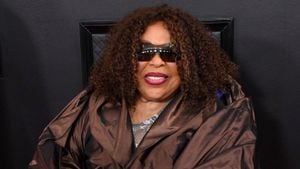2025 is shaping up to be a pivotal year across multiple sectors, with influences from technological advancements, shifting cultural norms, and changing consumer preferences. From open banking innovations to men’s jewellery trends and luxury real estate concerns, these developments are poised to set the tone for the near future.
Open Banking Takes Center Stage
The financial industry is undergoing significant transformation as open banking emerges as the norm for transactions. Initially focused on bank-to-bank transactions, the scope of open banking is rapidly broadening. Fintech companies, mortgage lenders, and insurance providers are leveraging this new payment technology to streamline services and offer personalized financial products. According to projections, the global market for open banking could reach $164.8 billion by 2032.
A revolution is underway with the adoption of pay-by-bank services, which have surged from 320,000 transactions in the UK back in 2018 to 224 million by 2024. This growth is significantly attributed to Millennials and Gen Z consumers, who appreciate the efficiency of not having to enter card details repetitively.
Some upcoming regulations signal major changes for 2025. The Instant Payment Regulation (IPR) mandates euro payments to occur instantaneously. By January 2025, banks will have just 10 seconds to process transactions at any time, making instantaneous transactions the new standard, effectively eliminating delays and increasing efficiency.
Complementing these changes, the introduction of Variable Recurring Payments (VRPs) offers businesses opportunities to facilitate seamless subscription models. With these innovations, consumers can enjoy hassle-free payments without the need for constant approvals.
A New Era for Men's Jewellery
Shifting gears to fashion, 2025 heralds bold transformations within the men's jewellery segment. Bracelets and necklaces are moving toward more expressive designs. Chunky chains have become statement pieces, highlighting confidence, and are complemented by minimalistic designs of simple rings and delicate pendants. Personalization remains at the forefront of trends, with customized pieces, such as engraved signet rings and necklaces holding sentimental value.
Expect to see modern takes on beaded bracelets featuring semi-precious stones, as well as the re-emergence of statement rings and layered necklaces. Pearls—a classic symbol of elegance—are transitioning to men's accessories, undermining traditional gender norms. Further embracing nostalgia, vintage pieces with historical significance, including antique signet rings and retro chains, are gaining attention among style-conscious men.
Alongside these styles, men’s earrings are making significant strides with diverse options, ranging from minimalist studs to bold hoops, highlighting the desire for personal expression through accessories.
Luxury Real Estate Trends Shift
Turning to real estate, the luxury property market, especially throughout London, is seeing substantial evolution. Potential buyers are increasingly emphasizing wellness technology and personalized living environments. UK’s wellness industry, valued at over $223 billion, has sparked interest from ultra-high-net-worth individuals investing heavily to incorporate sophisticated health and wellness technologies like customized saunas and advanced home purification systems.
Interestingly, Marylebone has emerged as the new focal point for prime property investment, overtaking Mayfair. This district’s unique charm, coupled with independent boutiques and upscale dining options, positions it as the appealing alternative for luxury living. Investors are discovering opportunities for substantial returns on renovated properties, especially those above £10 million, creating bespoke living spaces including significant upgrades and modern amenities.
Emphasizing individual customization, more buyers are opting for properties needing renovations, which resembles the broader trend of personal expression seen across consumer sectors. The appeal lies not only in creativity but the value of bespoke homes, capturing the growing desire for tailor-made environments.
Conclusion
The blend of technology and personal expression will be at the forefront of industry trends as we move toward 2025. Open banking advancements will change the financial transaction process, men’s jewellery will continue to push boundaries concerning masculinity, and luxury real estate will increasingly reflect buyers’ needs for health-centric living environments. For businesses and consumers alike, staying attuned to these upcoming trends will be instrumental for success across these sectors.



